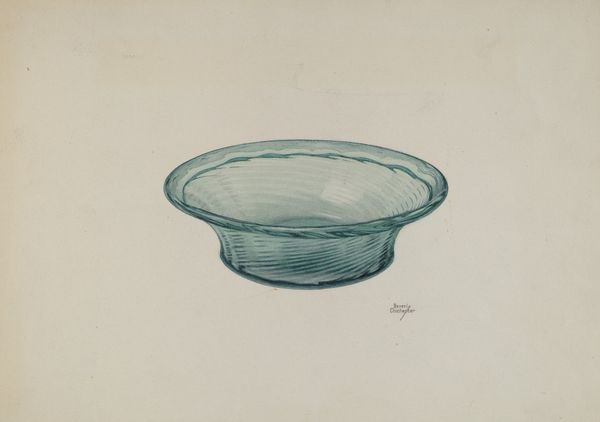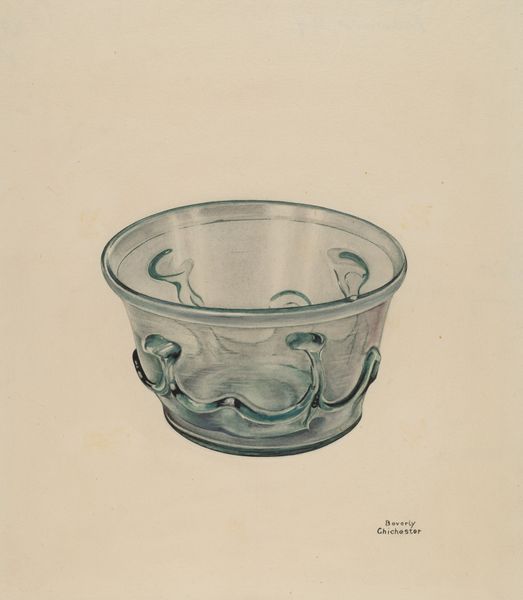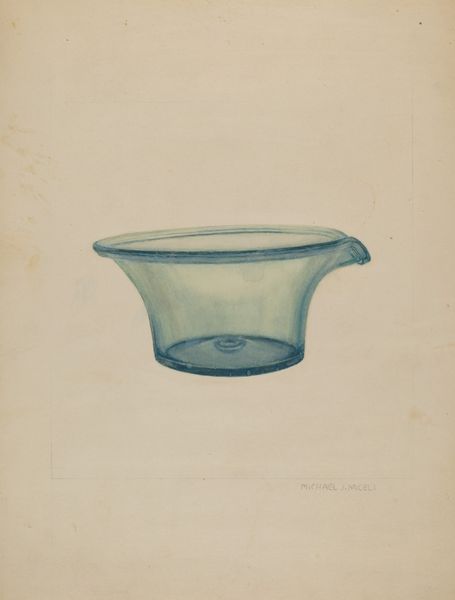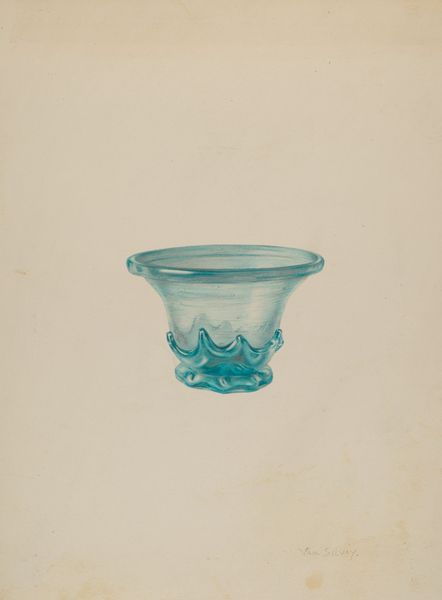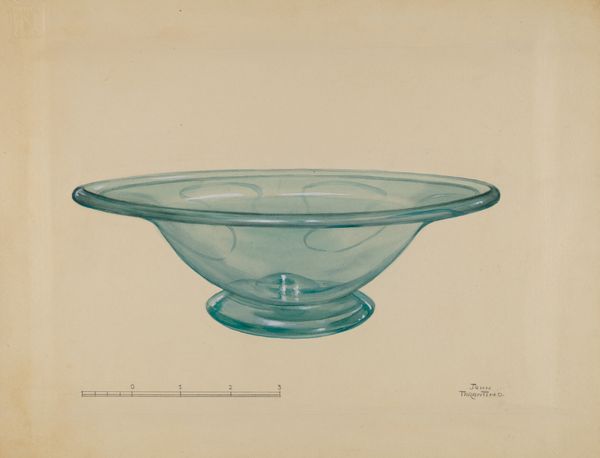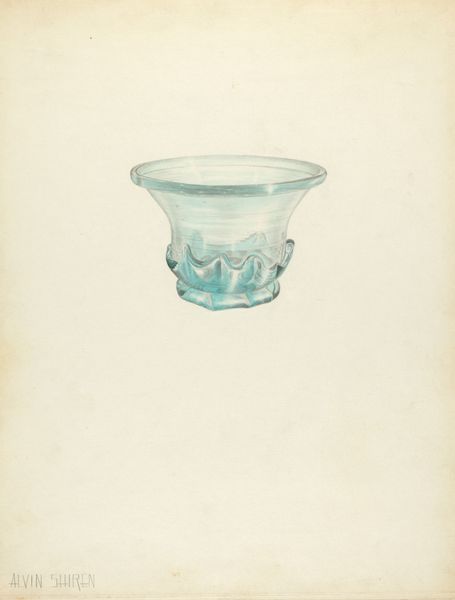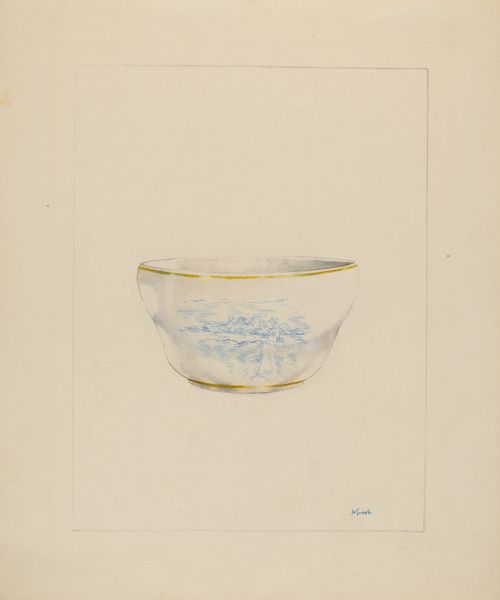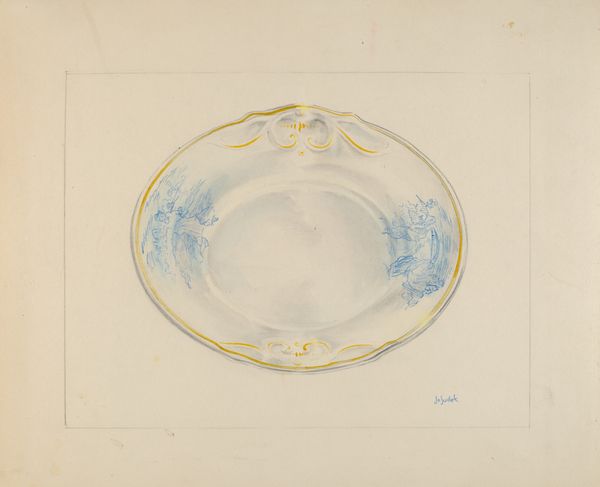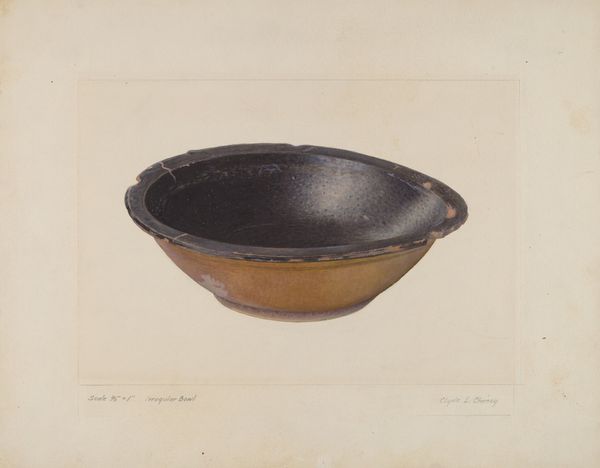
drawing, pencil
#
drawing
#
pencil
#
watercolor
Dimensions: overall: 29.5 x 36.3 cm (11 5/8 x 14 5/16 in.)
Copyright: National Gallery of Art: CC0 1.0
Curator: This delicate drawing, created sometime between 1935 and 1942, is titled "Dish," and it’s attributed to Van Silvay. The work appears to be pencil, perhaps with watercolor washes to suggest translucence. What are your first thoughts? Editor: It's airy. Ghostly, even. The almost transparent quality suggests absence, a container that’s currently empty, perhaps longing to be filled. It's quite fragile in appearance. Curator: Absolutely. I wonder, though, if its seeming fragility speaks to the broader economic realities of the time? Given the probable creation date during the Depression Era, an artwork depicting a simple dish—potentially alluding to both sustenance and lack thereof— could be interpreted through a socio-political lens. What are your thoughts on the use of symbolic meaning and its resonance with the audiences of the time? Editor: That’s a valid point, and seeing the imagery itself makes me wonder about what this dish meant to this artist and in a broader, social context. This shape is clearly referential, and those curvilinear details on the base, while delicate, have echoes of classical motifs, implying ideas of enduring aesthetic values. But is it past or present? Curator: Exactly. And perhaps that tension you are articulating so eloquently becomes heightened because it’s a drawing rather than a rendered three-dimensional object? A question becomes posed, where the very idea of “dish” or “vessel” exists solely as a sketched form. Is there function and what can we serve? Who had the privilege of its plenitude and how might such representation act as commentary on social and gender structures during a difficult economic and political period? Editor: I think you're right to see its political possibilities through that reading. However, focusing on its representation as sketched form, it becomes a sort of archetypal "dish"—stripped of a singular cultural identity and refined into its essence. I look at its roundness, at the perfect concentric symmetry of the rim. Is there no statement to be made on the dish's role as a source of nourishment and what nourishment represented, not just then, but even today? Curator: Well, in that sense it seems the piece operates through its symbolic tension – it’s simplicity belying multiple social and iconographic complexities. Editor: A perfect balance. A reminder that things may never really be what they seem to be on the surface.
Comments
No comments
Be the first to comment and join the conversation on the ultimate creative platform.
